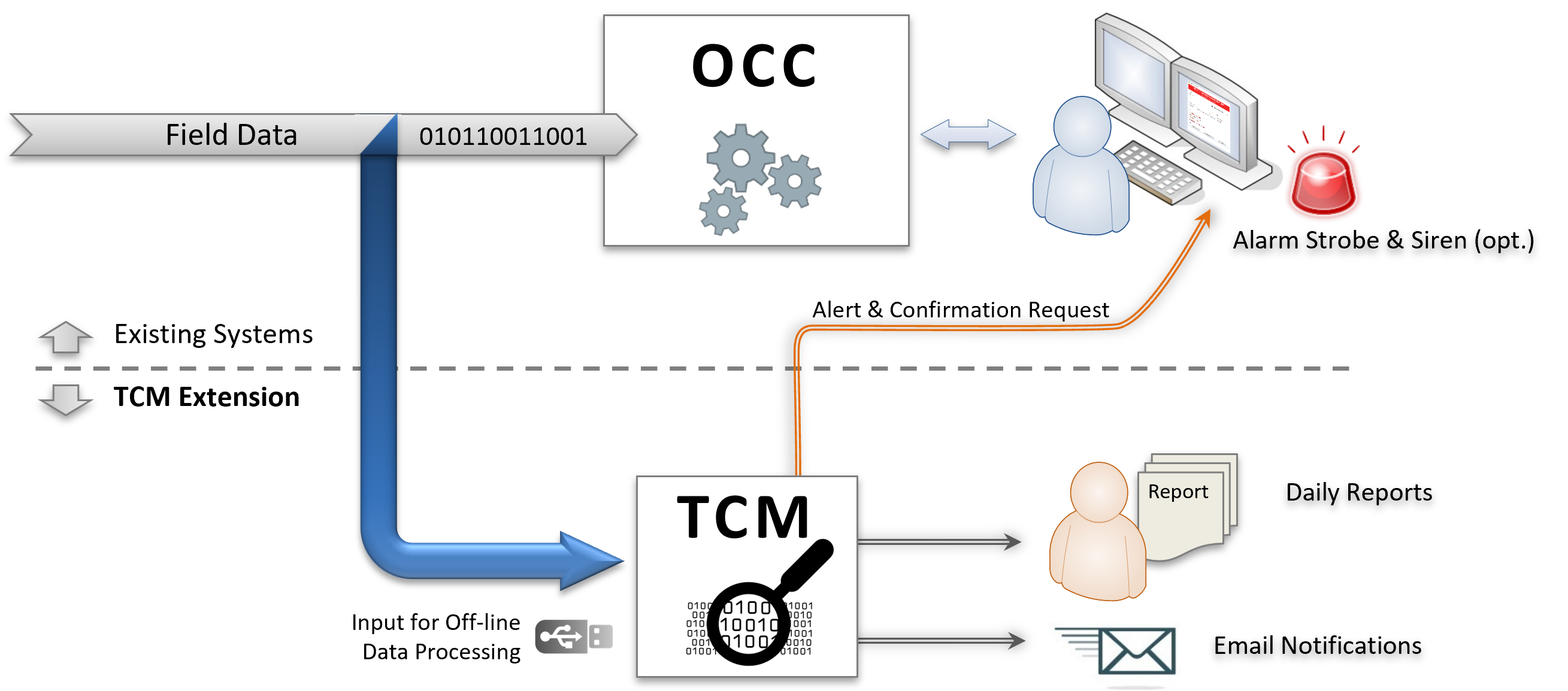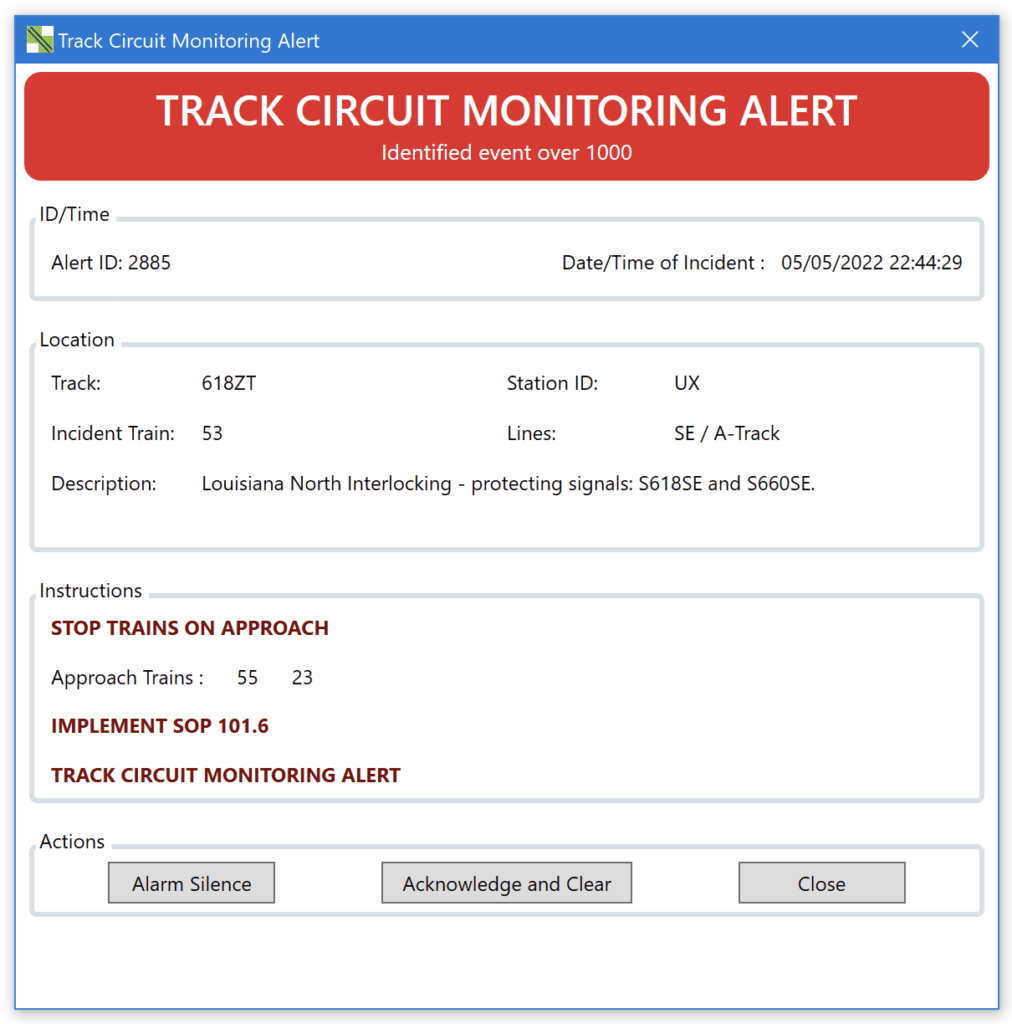TCM Implementation Concept
A primary objective of the TCM product development is to provide Transit Agencies an Accessible and Cost Effective Solution for a secondary train tracking evaluation system. With the deployment of TCM, transit agencies and operating entities demonstrate compliance to the following:
- NTSB recommendations R-09-6 URGENT and R-09-7 for a secondary train tracking system to evaluate track occupancy data on a real time basis to prevent train collisions. Automatically generate alerts and speed restrictions upon detection of track circuit anomalies;
- APTA Recommended Practice Guidelines for Software based Maintenance Tools.
Figure 1 to the right illustrates a typical concept of a TCM deployment as a secondary track circuit and evaluation system. The horizontal dashed line that separates the existing Operations Control Center system (OCC) from the Track Circuit Monitoring system (TCM).
Note, deviations are not unusual – Field data could for instance be acquired by TCM directly from field data acquisition units such as RTUs or PLCs.
Orange and red symbols illustrate alert infrastructure:
- The orange data flow transmits incident specific information from TCM to the OCC Operator’s Console, such as date & time, location, train IDs of involved trains, and recommended SOP.
- Alert infrastructure devices are typically audible and visual alarm devices e.g. sirens, buzzers, strobe lights.
- The Operations Control Center Operator (light blue figure) manages an incident via the incident alert window that pops up automatically upon identification of a potentially safety critical condition related to train detection systems (triggered by TCM).
- Other departments such as ATC Engineering, Maintenance, Operations, and Safety will be notified my email, which includes a summary chart of the incident (email addresses are configurable).
- Any abnormal behavior will be reported to ATC Engineering and Signaling Maintenance (light orange figure) once or twice daily for review and corrective action.
In Summary, TCM is an addition to an existing Operations Control Center infrastructure and works as a secondary train tracking and verification system. In 24/7 live streaming real-time operation, TCM receives track circuit data from the signaling system either via the OCC or directly from the Train Control Room via a data acquisition unit (e.g RTU). TCM issues reports, email notifications, and alerts upon identification of abnormal operation or a potentially unsafe conditions. TCM separates and alerts to Operations Control Center operators only those conditions, creating potentially unsafe conditions and affecting the reliability and of rail systems. Abnormal behavior that is not considered safety critical (e.g. bobbing track circuits, false occupancies) will be logged and notified to ATC maintenance for review and corrective action.
All live data is being recorded and available for historic analysis. Historic analysis of other off-line data is supported by an Event Loader (part of TCM) which allows import of track circuit data stored to a network device or a USB Drive.



